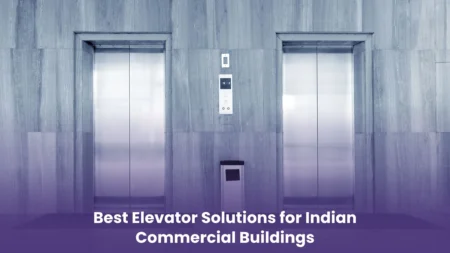Many real estate experts firmly believe that goods elevators can sky-rocket the value of commercial settings. But what made the goods elevators hit the mark? These elevators boost efficiency and safety in transporting heavy goods. This attracts visitors and increases the value and efficiency on the one hand.
Read on to learn more about how businesses across sectors are increasingly adopting these elevators to streamline operations.
Boost Efficiency with Goods Elevators
First things first, what is the role of goods elevators? Such elevators are specially designed to transport weighty items between floors. This substantially boosts workflow and cuts down the need for manual labor. Many industries use such elevators to automate the movement of materials, equipment, and products. As a result of this employees can focus more on other essential tasks that cannot be replaced by machines. Here are the industries that make the most use of such elevators:
- Manufacturing
- Logistics
- Retail
Boosting Safety in Business!
The role of an elevator doesn’t stop from transporting goods. It has more to do. Safety in workplaces can be promised by high-end goods elevators. The manual lifting of heavy objects frequently leads to workplace injuries. These injuries can be strains, sprains, and more serious accidents. By using a dedicated goods lift, businesses can cut down the risk of injuries and prepare the ground for a safer working environment.
A Goods elevator that is equipped with advanced safety features like braking systems, load sensors, and lift motors can promise smooth, controlled movement. When you have these systems, you can put an end to overloading and accidents. This promises the safe transportation of goods. Businesses that follow safety standards set by regulatory bodies like OSHA can avoid costly legal liabilities and save their employees from harmful accidents and injuries.
Different Elevators for Different Needs
Not all buildings require the same type of elevator. Each elevator has distinct features that are tailored to the different needs. Businesses can choose from diverse types of goods elevators, each tailored to specific requirements:
Hydraulic lift
Hydraulic elevators are the ideal option for low-rise buildings. These elevators use a hydraulic system to move the platform. If you are looking for elevators for your warehouses or small factories where space is limited, then these elevators are the best fit for you.
Traction elevators
Traction elevators are known for their energy efficiency. These suit the best for medium to high-rise buildings. Such elevators use ropes and counterweights. As a result of this, such elevators can handle heavier loads. And this is what makes them perfect for large commercial spaces.
Machine-room-less elevators
If you have space constraints, then MRL elevators are your go-to option. These elevators can save space as they don’t need a separate machine room. This makes them a modern and efficient solution for businesses looking to configure their building space.
Each type of elevator provides unique advantages, depending on the business’s specific requirements. Hydraulic lifts are cost-effective for smaller spaces, while traction elevators provide energy efficiency for larger setups.
Goods Elevators vs. Passenger Elevators
Here comes the most anticipated question: What is the difference between Goods Elevators and Passenger Elevators? Although both goods and passenger elevators serve transportation purposes, there is a stark difference between them. From their designs to their functions, both lifts have their own set of uniqueness and disadvantages.
Passenger lifts are built for comfort, speed, and safety, catering to people. These lifts pay more attention to aesthetics and comfort. This quality makes them more suitable for office buildings, hotels, or residential settings.
On the flip side, goods elevators mainly aim at functionality, handling heavy loads with reinforced floors and higher weight capacities. These lifts focus on durability and safety. This makes sure that the efficient transportation of materials in commercial environments without the need for decorative interiors or high-speed capabilities.
Technology in Modern Goods Elevators
It is an undeniable fact that modern goods elevators are furnished with advanced technology that further improves efficiency and safety. Lift motors are now more energy-efficient than ever before. This helps cut down operational costs.
That’s not all. Smart control systems manage traffic during peak hours to promise faster and more efficient transportation of goods. Safety sensors, another technological innovation, detect obstacles in the elevator shaft and stop the elevator automatically to prevent accidents.
Not to mention, remote monitoring systems set the stage for maintenance teams to track the elevator’s performance in real time. This confirms that potential issues are addressed at the early stage instead of waiting for them to escalate into major problems.
Maintenance and Cost Considerations
Is maintenance important for a high-quality lift? Certainly yes. Installing a goods elevator requires a significant upfront investment. There’s no question about it. However, it is essential to note that the long-term benefits in terms of increased productivity and improved safety far outweigh the costs. Goods lifts need regular maintenance to promise smooth operation and prevent breakdowns. When you decide to invest in preventive maintenance, you can extend the lifespan of their elevators. This reduces the need for costly repairs or replacements.
The Ending Note
In conclusion, goods elevators are an asset for any business aiming to improve operational efficiency and safety. With the availability of various types of elevators and continuous technological advancements, businesses can find the right elevator lift to meet their specific needs, whether it’s a Goods Elevators or a larger commercial setup.












